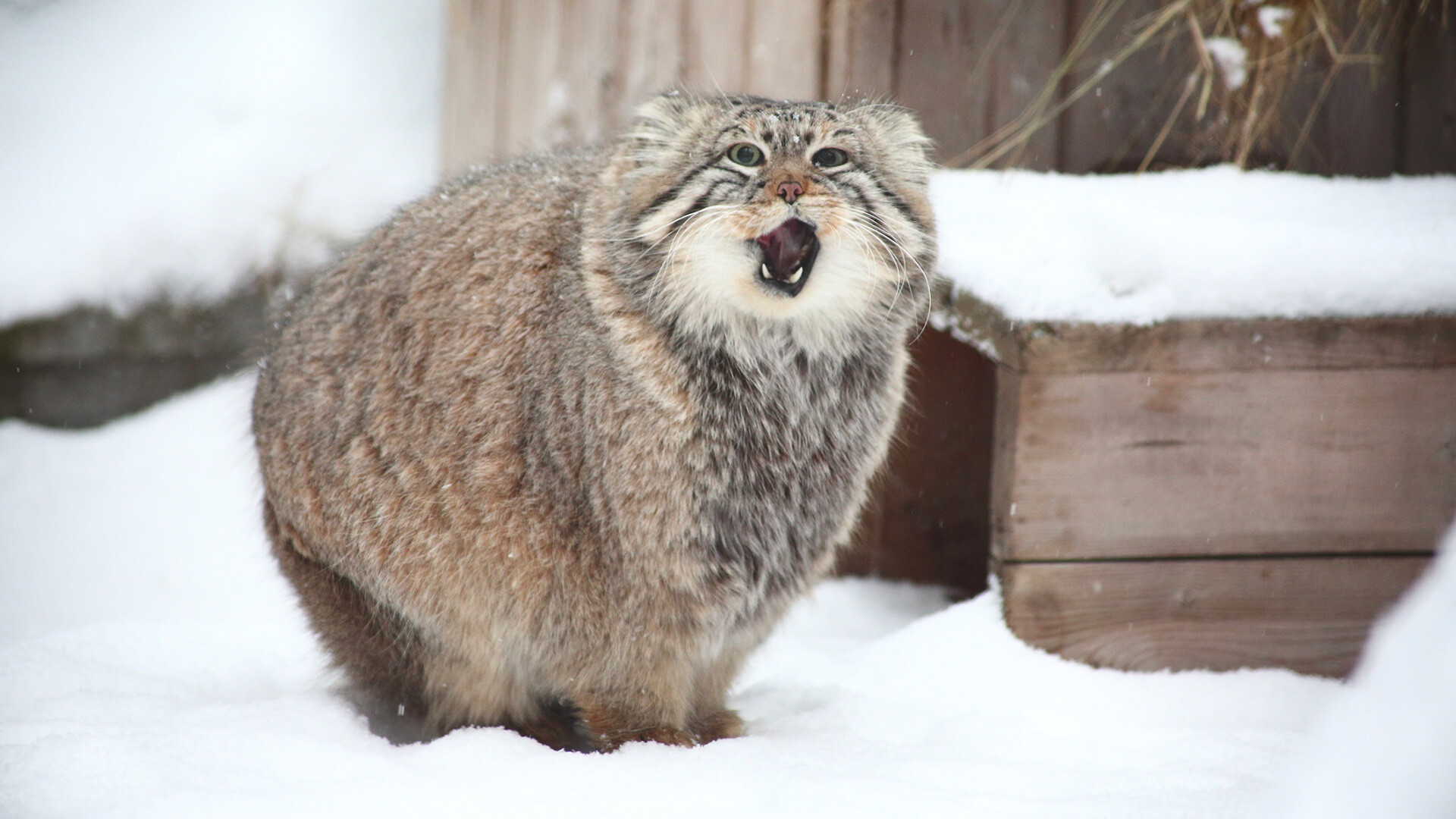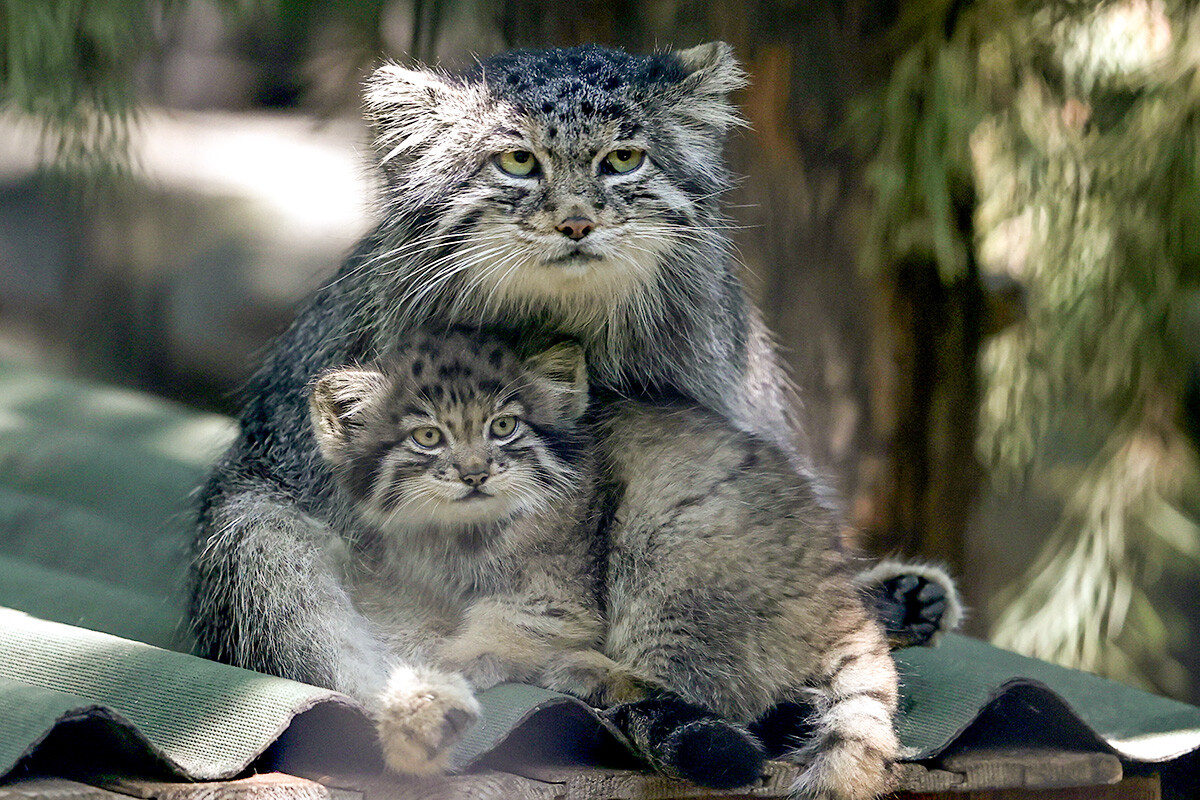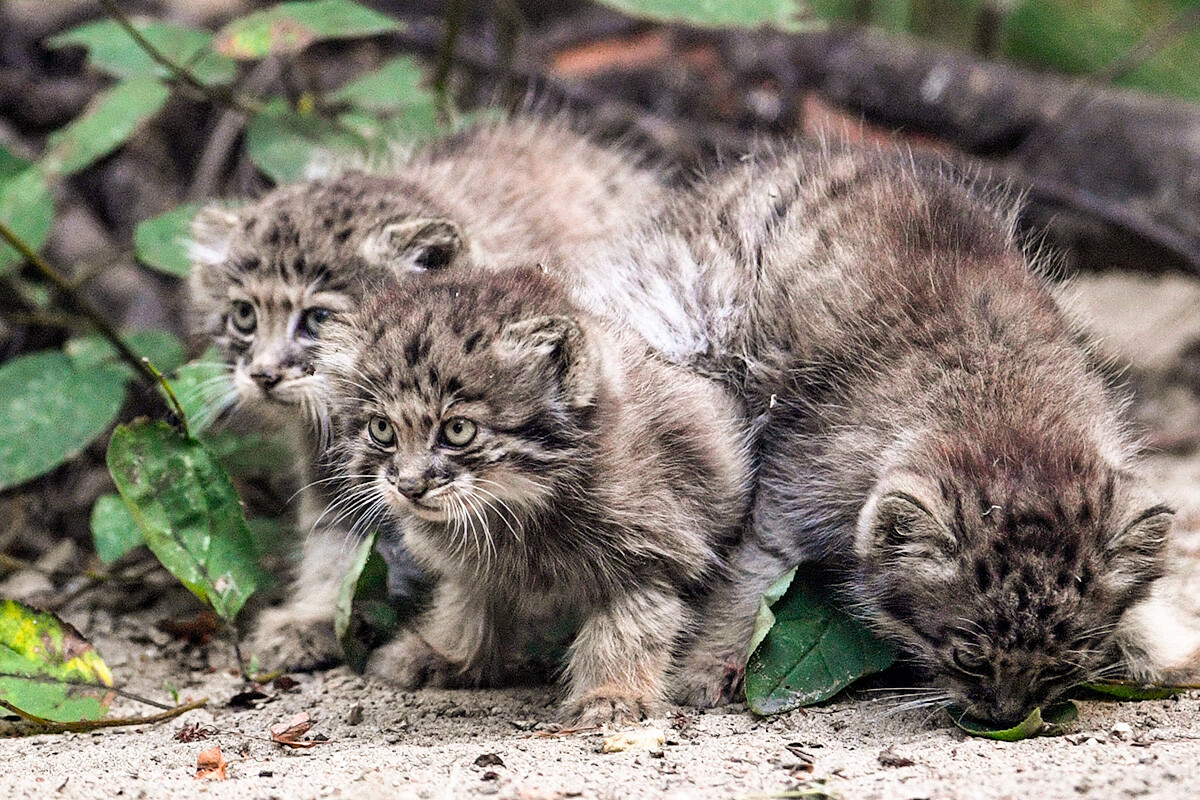
Winter manul.
Legion MediaManuls - also known as Pallas’s cats - can be described as grumpy, rare - and very furry. It is almost impossible to encounter them in the wild: Their habitat is the deserted steppe of the Trans-Baykal region and some areas in Central Asia (you can read more about manuls here).

This kitten was born in 2015.
Alexander Kryazev/SputnikOnly 150 manuls are kept in zoos around the world and almost all of them are related. Many of them were born at Novosibirsk’s ‘Rostislav Shilo’ Zoo. Let’s get to know them!
A video of a Pallas’s cat from Novosibirsk putting its paws on its bushy tail became an instant hit on the internet. For a start, it’s incredibly cute. Secondly, it’s puzzling - not many people know that this is one of the ways they keep themselves warm during the cold winters. And, thirdly, it turns out manuls know how to pose for the camera.
The main bloggers specializing in manuls are local residents Sergei Iltyakov, Anna Novikova and also Roman Paulov, who, accompanied by his wife Viktoria, regularly visits the zoo to capture interesting moments in the life of these endangered cats. For example, below you can see how the manul Snezhinka (Snowflake) is asking a zookeeper for a tasty treat.
Why do these wild cats not mind people too much? The zoo has been studying Pallas’s cats for 30 years, creating comfortable conditions for them. Novosibirsk Zoo is very big and green - it is surrounded by the Siberian forest. The manuls live at the far end of the zoo, where it is fairly quiet and there are less crowds. Also, manuls have very weak immunity and they don’t tolerate heat well, since, originally, they were acclimatized to cold conditions (in which bacteria do not multiply). Novosibirsk is still quite a cold city in Siberia and manuls are used to this sort of climate.

Mia the manul wih her kitten. She is the mother of six!
Kirill Kukhmar/TASSThere are dozens of cats here altogether: As a rule, mothers and their kittens live in one enclosure, adult males and females live separately, but, in close proximity, so as to be able to socialize, while youngsters are kept in pairs.
“One of the oldest manuls in our zoo is Karaganda, who is about 10. He normally keeps himself to himself, but he is not particularly afraid of people,” Roman says.
The most photogenic of the manuls is Zelenogorsk. “If you see a photo or an amusing video showing a manul at Novosibirsk Zoo, there is a high degree of probability it’ll be Zelenogorsk.” It was Zelenogorsk who showed everyone how to place their paws on their tail!
In addition to these, the residents of the zoo include the graceful Eva, the bashful Emma, the independent Lastochka, the introverted Adel, the combative Erl, the ever-surprised Chip, the good-natured Achi and the perpetually underslept Zhora. Last summer, good-looking Mia became the mother of six kittens, including Snezhinka.
There are “marriage” plans again this year for several pairs.
Achi and Emma live together and can be seen soaking up the sun. Emma spends her time stretching out her leg or sauntering oh so prettily or darting romantic glances, while Achi mutters in displeasure - is he a manul or what?
The manuls Zelenogorsk and Adel also plan to start a family this year, but, in the meantime, they are still eyeing each other up.
And Lastochka is regarded as the most timid member of the group. She is the mother of Moscow’s Timofey, as it happens - and Timofey also rarely makes an appearance in front of visitors.
More than 60 manul kittens have been born at the zoo since 1995. An unusual event took place in Novosibirsk Zoo in 1999: A female by the name of Solda gave birth to nine kittens.
Cats from Novosibirsk live in Zurich, Poznań, Tallinn, Barnaul, Izhevsk and other cities.

A kitten with his mother, 2018.
Alexander Kryazev/SputnikThe year 2020 was particularly fruitful - as many as three cats became mothers and the zoo had 16 (!) angry blue-eyed kittens at once.

Three of those 16 kittens.
Alexander Kryazev/Sputnik“So small, but already a manul,” was the internet joke that did the rounds at the time. All the manuls have names. They can’t be said to react to them in any way, but still.
Bonus: All the manuls at Novosibirsk Zoo in one video!
Dear readers,
Our website and social media accounts are under threat of being restricted or banned, due to the current circumstances. So, to keep up with our latest content, simply do the following:
If using any of Russia Beyond's content, partly or in full, always provide an active hyperlink to the original material.
Subscribe
to our newsletter!
Get the week's best stories straight to your inbox